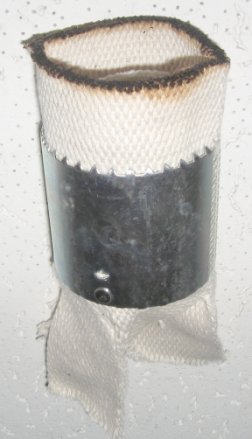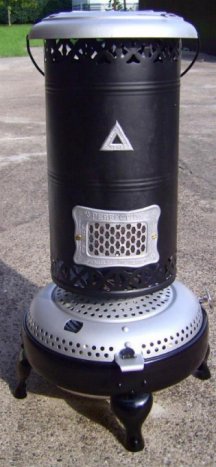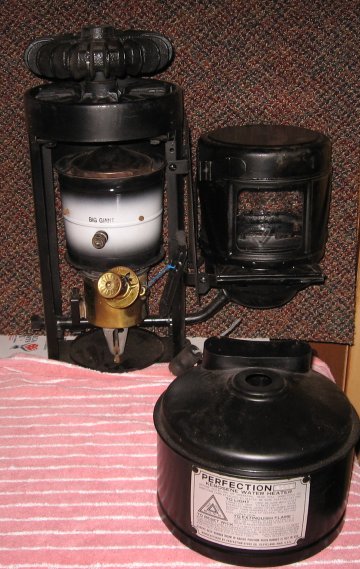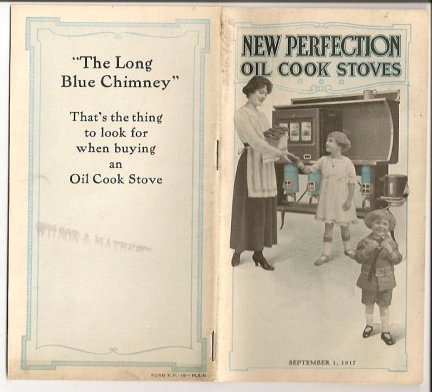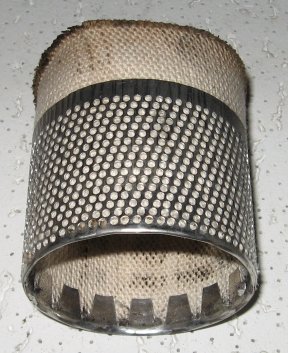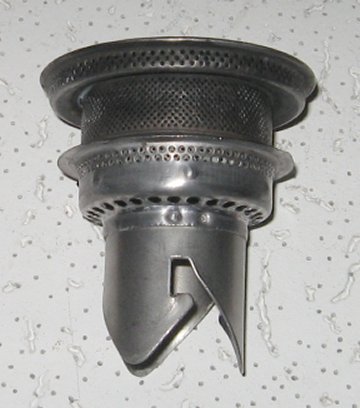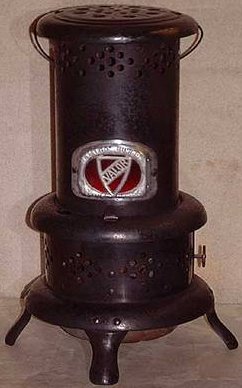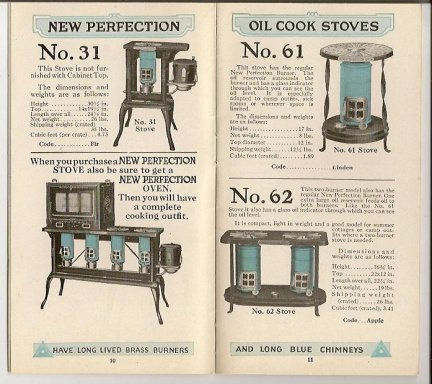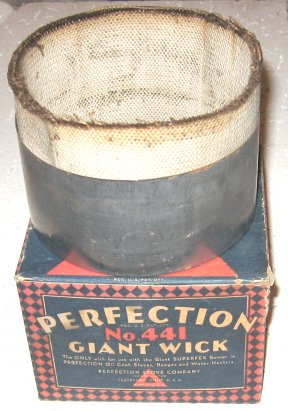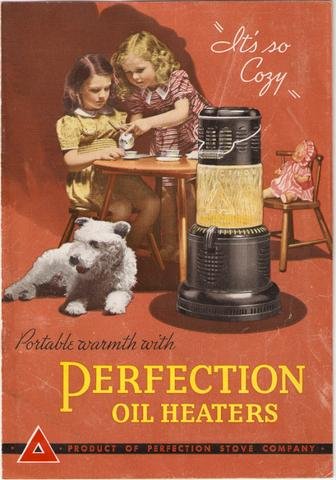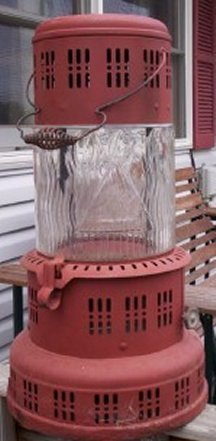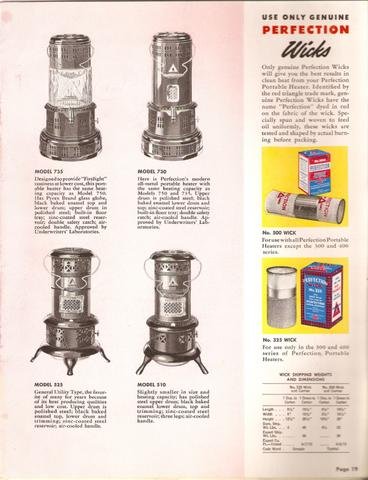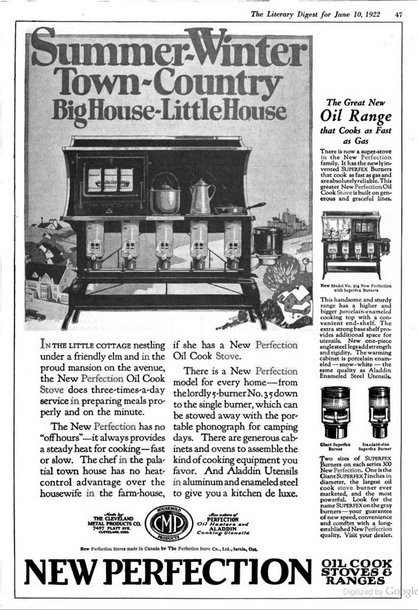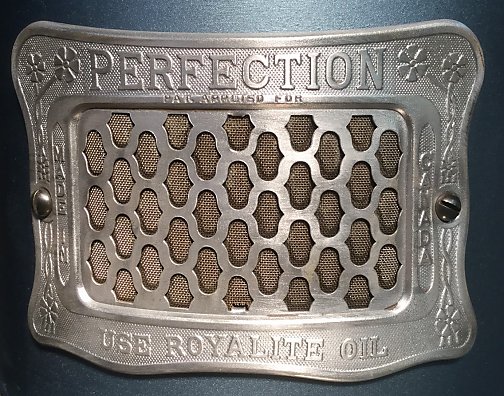History of the Perfection Stove Company
HISTORY OF PERFECTION IN CANADA by Lorne Barnes
More than just a heater, Perfection was a Way of Life for many people.
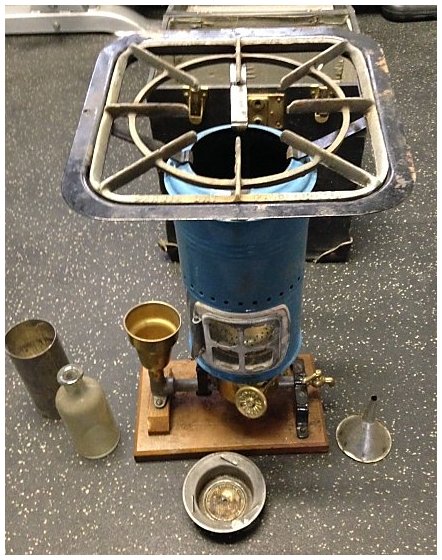
Salesman's sample of Perfection ''Long Blue Chimney." More photos below (click here).
(Above, original window sign from the 1930's, used in neighborhood Perfection stores.)

Links
Perfection 500
Owner's Manual
Perfection
Wicks
Perfection 300-400
Heaters
Perfection 441X
Wicks
In 1888, Henry Parsons Crowell was approached by Frank Drury to build, and market, a 'lamp stove'. The two men discussed the practicability of such an item. A patent was applied for; the Cleveland Foundry Company began building and then selling the stove. The 'Perfection Stove Company' was born.
In 1888 the Cleveland Foundry Company was formed. They manufactured a line of oil lamp stoves, along with many lamp companies such as Bradley & Hubbard and Miller. In 1894, the plant started producing portable heaters. These heaters used the "store lamp" wick that had been standardized by Rochester in 1884. In 1901 Francis Drury approached John D. Rockefeller of Cleveland owner of Standard Oil Company. At the time Standard Oil was delivering kerosene to homes and businesses for use in kerosene lamps. Rockefeller knew that with use of the Drury Stove the demand for this kerosene would increase substantially and it did. Rockerfeller selected the company to design, develop and manufacture for it a complete line of stoves which were to be sold under the name "Perfection" to dealers by a group of 300 Standard Oil salesmen. This arrangement was continued by other oil companies.
The Perfection product lineup was extremely important to the growth of American civilization. By 1918, over 5,000,000 heaters were in use. By 1922, over 3,000,000 Perfection kitchen stoves and ranges were in use in American homes! A sizeable percentage of households used a Perfection product on a daily basis.



